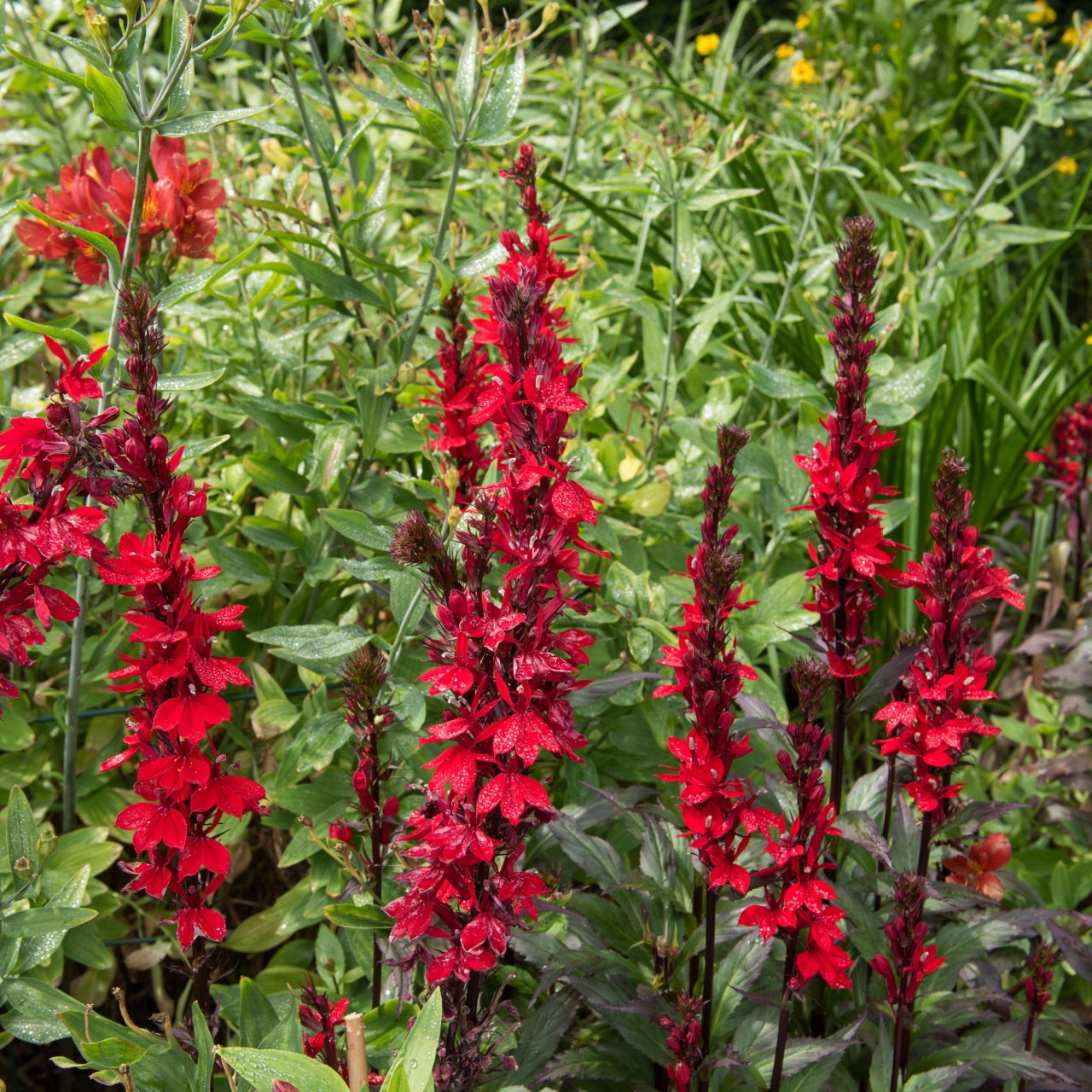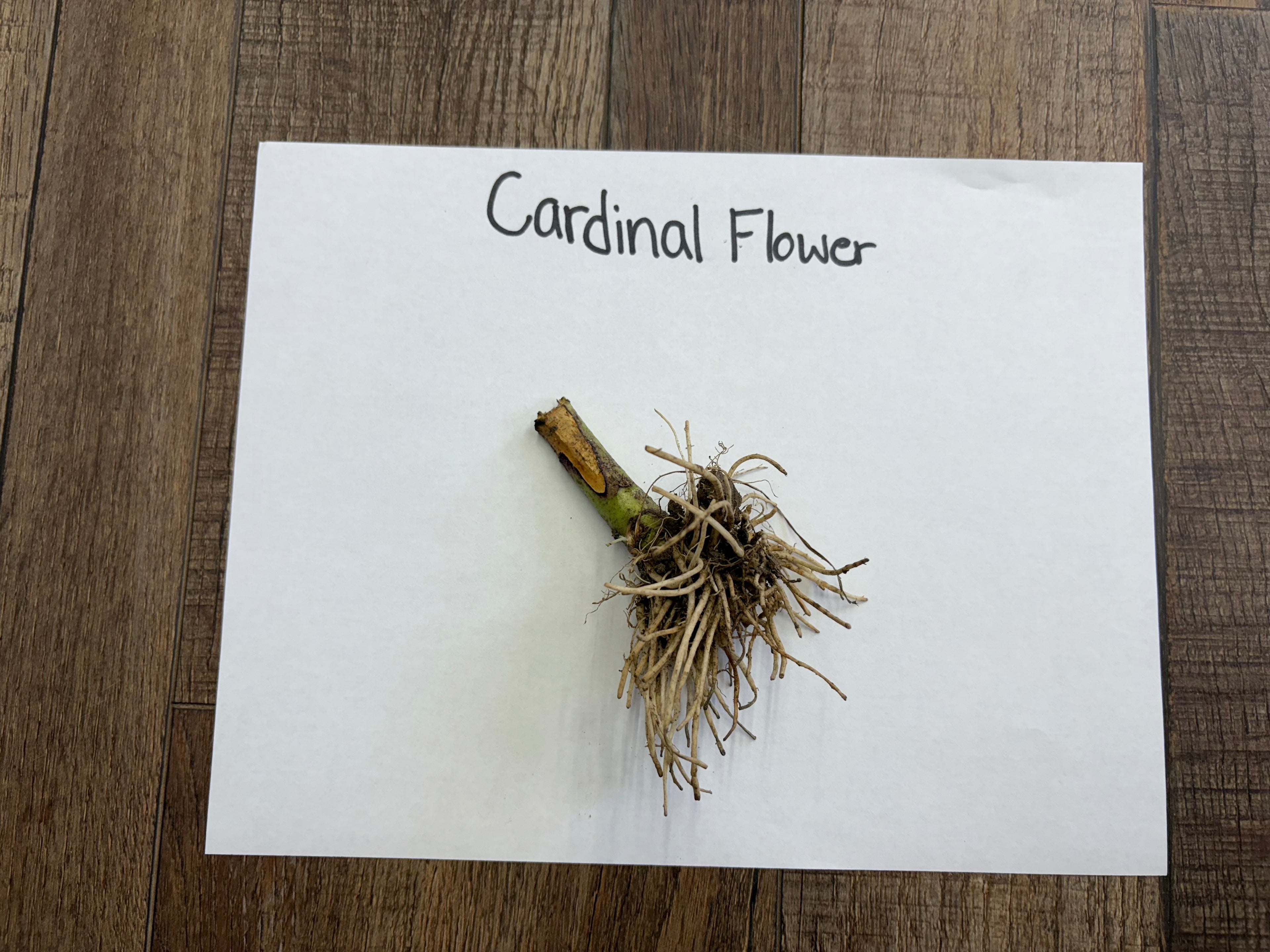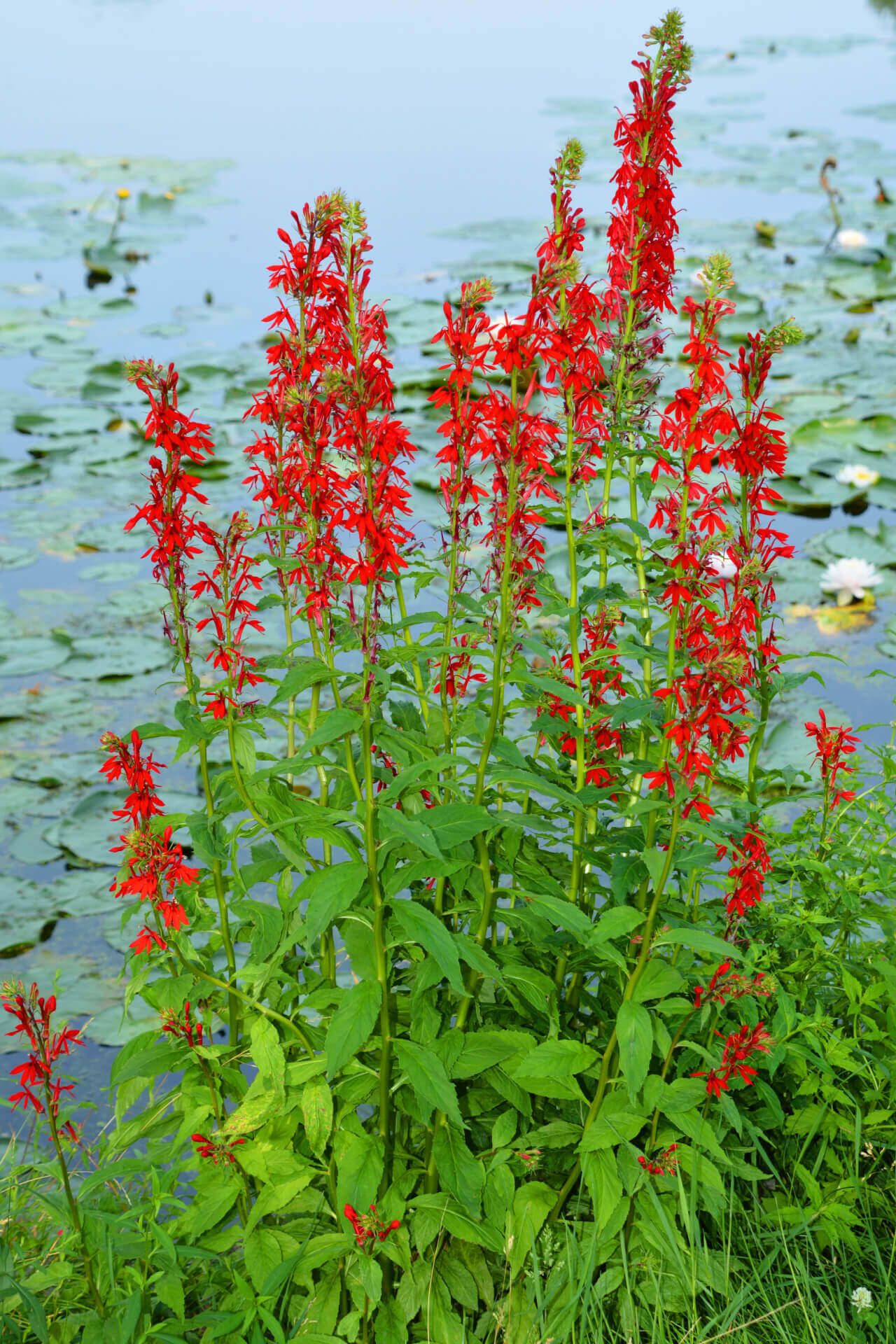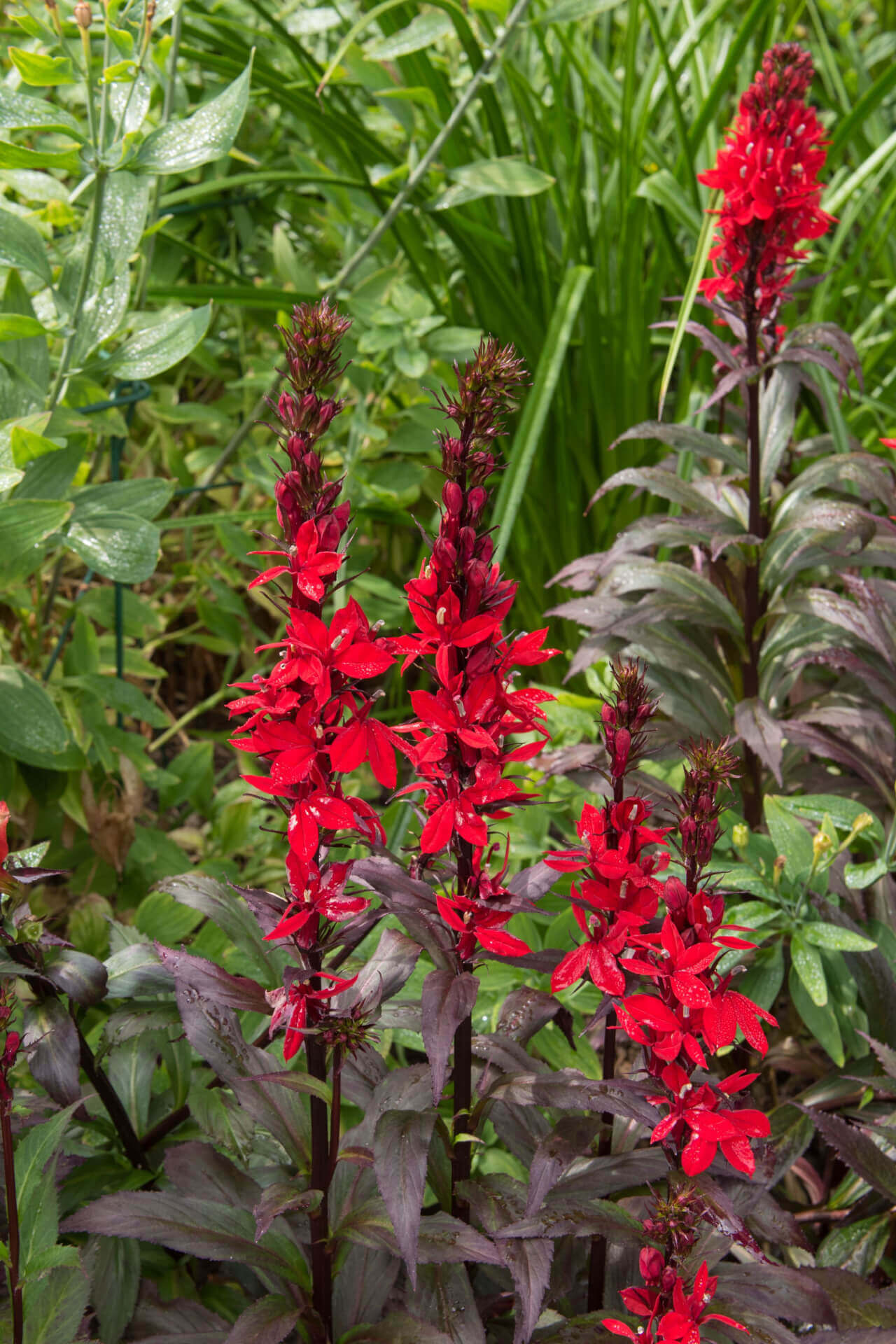Cardinal Flower for Sale
The cardinal flower, also known as Lobelia cardinalis, is a herbaceous perennial that puts on a show! This native plant with bold scarlet red flowers makes a statement and complements any garden. It is gorgeous when mixed with heuchera, ferns, and swamp milkweed. It is a pollinator favorite, especially for hummingbirds and butterflies.
Plant Details - Lobelia Cardinalis
Family: Bellflower (Campanulaceae)
Light Requirement: Full
Water Needs: Moist
Height: 3-4 ft.
Spread: 1-2 ft.
Bloom Time: Summer
Flower Color: Red
Wildlife Value: Attracts bees, butterflies
Landscape Uses and Maintenance
The Lobelias grow near shaded streams naturally, so they will enjoy growing in wetter places in your garden. Keep them consistently moist and do not allow them to dry out.
As it prefers the shade to sunny areas, it brightens any dark corner with its stunning scarlet blooms that will impact your garden. As an upright and stately perennial, this flower is a delight to the eye and will be a stunner in your garden for years to come.
Not a one-hit wonder, this red cardinal flower is truly versatile! Put it in your border, pollinator garden, rock garden, or meadow. It is a low-maintenance plant that will not need much direct care. Water deeply when first planting. Water during droughts.
If you want to give your new plants an extra treat, you can top dress the soil around them with compost or leaf mold to improve soil structure or add organic matter. Make sure to give this plant some space around each clump, especially around its leaves, to prevent fungal issues. Treat with an organic fungicide should issues arise.
Noteworthy Characteristics of Red Cardinal Flowers
The cardinal flower is a magnet for many hungry pollinators, including hummingbirds, bees, and butterflies that enjoy the nectar from its flowers. Deer and rabbits will avoid this plant.
Have you been looking for an easy-to-propagate plant? This is the one! It will readily self-seed and spread slowly in your garden, without being invasive. You can leave spent, fertilized blooms to turn into seedpods that will allow the seed to fall when mature. If you do not want this plant to spread, simply deadhead the spent blooms.






